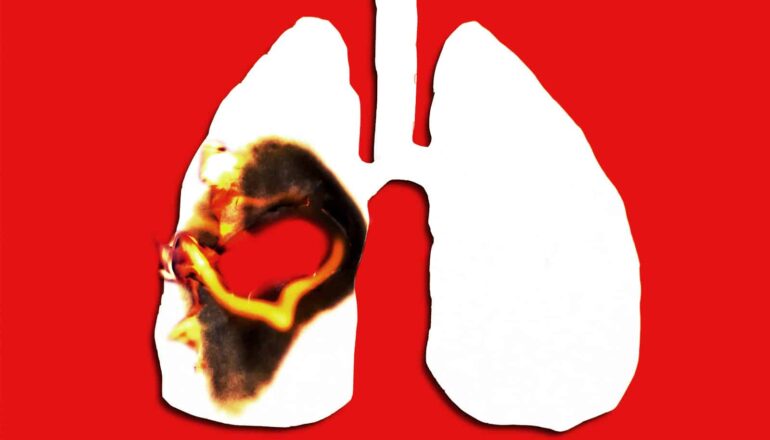New trick could stop lung cancer in its tracks
- A researcher at the University of Missouri has discovered that tiny bubble-shaped packages called extracellular vesicles (EVs) may hold the key to stopping lung cancer in its tracks.
- EVs are released by nearly every cell in the body, including cancer cells, and can carry harmful signals that drive tumor growth and resistance to treatment.
- A study found that EVs produced by cancer cells contain higher levels of a protein called CD81 compared to healthy cells, suggesting that CD81 may play a role in helping cancer tumors spread.
- By silencing the CD81 protein, researchers were able to shrink tumors and confirm its role in helping cancer cells spread, paving the way for new targeted therapies.
- The researcher hopes to engineer EVs as a drug delivery system, allowing new cancer drugs to target cancer cells without harming healthy ones, offering a promising solution to the limitations of current treatments.

In the quest for more targeted lung cancer treatments, a researcher thinks the solution may lie in tiny bubble-shaped packages that cells use to talk to each other.
These microscopic messengers, called extracellular vesicles (EVs), are about 3,000 times thinner than a human hair and are released in the billions by nearly every cell in the body, including cancer cells.
While EVs from healthy cells carry helpful instructions to keep the body healthy, EVs from cancer cells can spread harmful signals that drive tumor growth and resistance to treatment.
Now, a researcher at the University of Missouri is manipulating those harmful carriers to stop cancer in its tracks.
In a recent study, Akhil Srivastava, an assistant professor in the School of Medicine, found that EVs produced by cancer cells contain higher levels of a protein called CD81 compared to EVs produced by healthy cells, indicating that CD81 may play a role in helping cancer tumors spread. So, Srivastava put tiny pieces of genetic material called siRNA into lung cancer cells with instructions to stop producing the CD81 protein.
By “silencing” this protein, the EVs these cancer cells produced actually helped shrink tumors, confirming that CD81 was likely playing a role in helping cancer tumors spread in the first place.
“Once we discover more about all the biomolecular information these EVs carry from one cell to another, we can engineer them to deliver the information we want them to deliver to certain cells,” Srivastava says.
“Since chemotherapy kills both healthy cells and cancer cells, and expensive immunotherapy doesn’t work for all patients, there is a big desire for more targeted cancer therapies. We believe tiny EVs can play a huge role in the solution.”
Srivastava believes EVs do not just play a role in helping cancer spread, they can also be engineered to help treat cancer. Similar to labeling a package with a specific delivery address, Srivastava wants to harness EVs as a drug delivery system so that new cancer drugs can target cancer cells without harming healthy cells.
In a related study, Srivastava recently demonstrated this idea by loading tiny pieces of siRNA into modified EVs. These snippets of genetic code carried specific instructions to kill lung cancer cells without significantly harming healthy ones. In a preclinical model, the approach worked, highlighting the potential promise of EV manipulation as a new kind of treatment.
The research appears in Molecular Therapy Oncology.
Source: University of Missouri
The post New trick could stop lung cancer in its tracks appeared first on Futurity.
